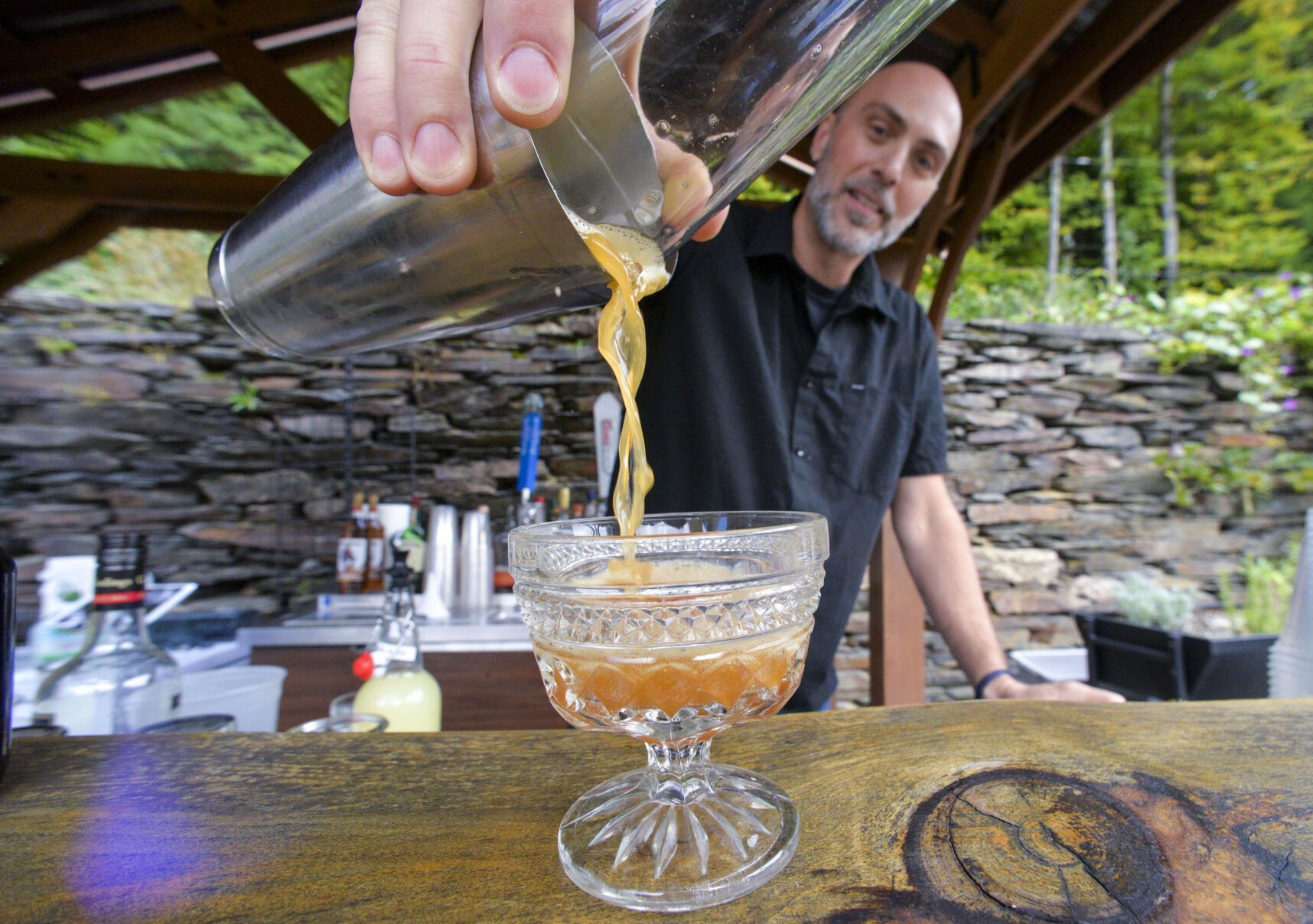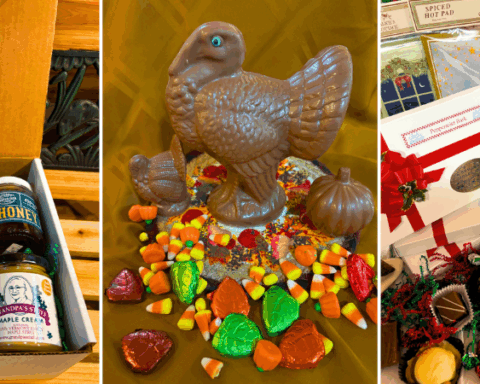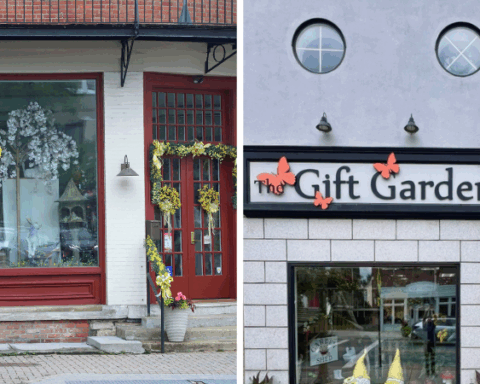Sweet stuff, hard or as a cocktail
By Bob Audette, Vermont Country
Apple cider flavors can change from year to year and even from batch to batch, said Simon Renault, general manager of Scott Farm Orchard, who is in his third season at the organic orchard on Kipling Road in Dummerston.
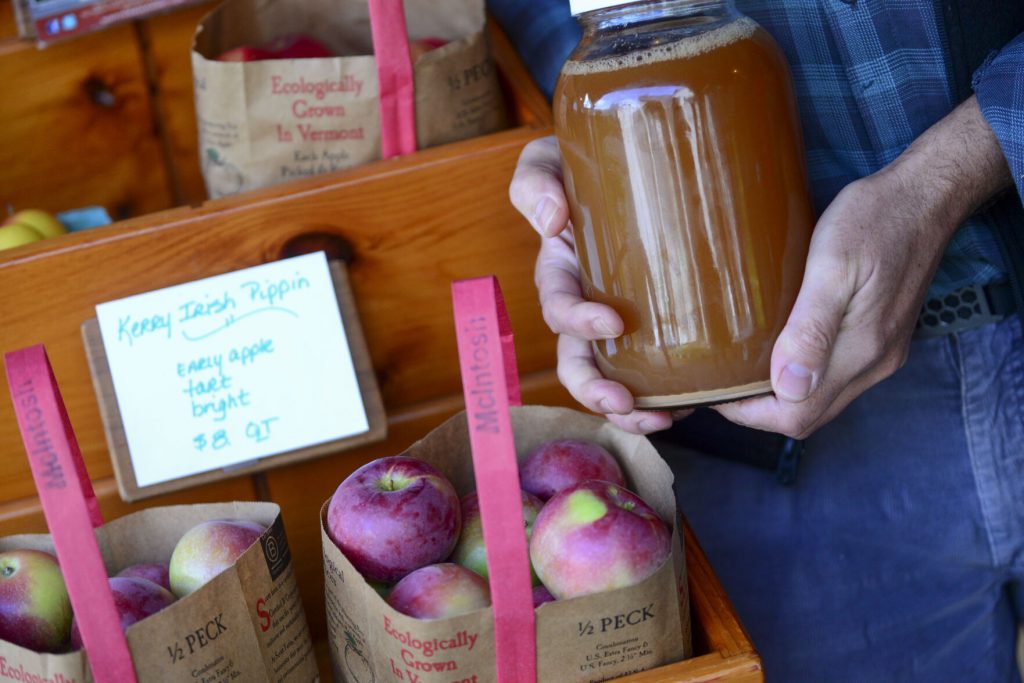
“Last year was a little bit more wet. The apples this year, may be a little bit drier, more potent. They have a thicker skin,” Renault said.
And flavors change through the season, depending on which apples are ready for picking.
“We constantly have a fresh supply of different varieties for sweet cider,” said Renault. “In the early season, we have a crab apple, originally from Kazakhstan, called Dolgo,” he said. “They have a burst of sugar, some good acidity and a lot of tannins. In the early season, we love using Dolgo crabs in our cider.”
Scott Farm presses apples two or three times a week, sometimes pressing more during the height of the season, about 30 gallons at a time.
When selecting apples for cider, he and orchardist Erin Robinson have to take into account tannin and acidity.
More tannin makes a sweeter cider, said Renault, but “we don’t do too sweet. We try to go for a balance, where the acidity balances the sweetness.”
Scott Farm’s cider isn’t as sweet as the ciders you might find on the shelves at the local supermarket. That’s because those producers use what Renault calls “lunchbox apples,” such as McIntosh, Cortland and gala.
“The more varieties you use, the more diversity, the more you’ll end up with something interesting,” said Renault.
Last year, Scott Farm made its first batch ever of hard cider, fermenting 400 gallons that are available now at its farm store.
“A good hard cider uses very specific varieties of apples, apples that have good levels of tannins,” he said. “It means varieties like Kingston Black, Dabinett, Yarlington Mill and we have some French varieties called Muscadet de Bernay.”
When the chilly days of autumn settle in, Renault said he occasionally warms up his cider to put in a thermos when he’s working outdoors, but he doesn’t necessarily add spices or citric juices that traditionally go into a mulled cider.
“We don’t, because we love our cider so much. With all the varieties, there’s so many natural flavors coming from the apples, you don’t need to add anything.”
Some people like to add liquor to sweet cider. For instance, Ethan Allen and the Green Mountain Boys drank a mixture of cider and liquor called a Stone Fence Cocktail, mixing a wine glass of bourbon, a couple of ice cubes and lots of sweet cider.
Drew Kacik, a mixologist who lives in Westmoreland, N.H., said he’s passionate about creating cocktails and flavor profiles using a variety of ingredients, including apple cider.
“Apple cider is a great thing to mix, because it does have such a diverse flavor profile.”
He also recommends that you use fresh cider. “Fresh heirloom ciders are so much nicer than the traditional cider you find at the market,” he said.
When mixing a cider cocktail, Kacik likes to experiment with mezcal, whiskey, vodka and gin from Barr Hill in Montpelier.
“With mezcal, a very smoky tequila-style cocktail, I add a touch of cinnamon and a touch of hot pepper,” he said. “The first thing you get is the mezcal, then you’re going to get the spice and then at the end a little bit of sweetness from the apple cider.”
Kacik spent some time working at Saxtons Distillery in Brattleboro and loves to experiment with its liquors, as well.
“The maple bourbon is really nice with cider with a little bit of hot pepper. You get this nice little hot spice, the sweetness from the maple, the bite from the bourbon and then the apple cider gives this warm kind of hearty flavor to it.”
He encourages people to experiment with making their own cocktails.
“Whenever you experiment, I always say start small,” said Kacik. “When you’re adding spices or you’re adding different flavor profiles, start small and then build from there.”
At Scott Farm, they also like to experiment a bit with their cider.
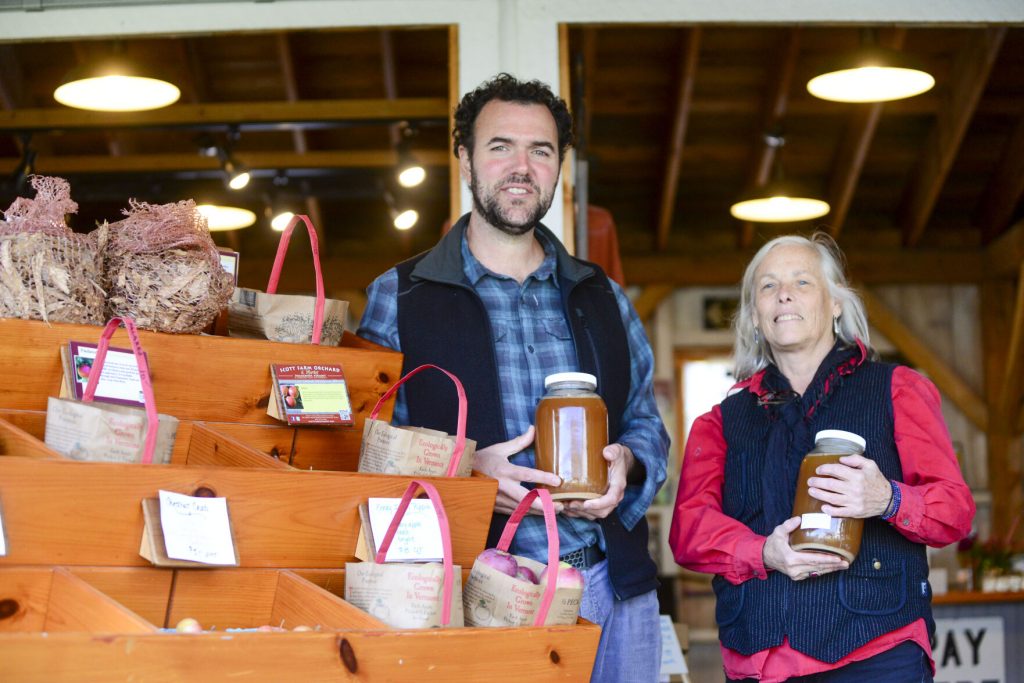
“One of the things that we started doing a few years ago is grow fresh ginger in our greenhouse,” said Renault. “We bring the ginger roots to the kitchen, wash them, put them through a juicer, and then we add a little bit of ginger juice to the cider. It’s amazing.”
Scott Farm doesn’t pasteurize its sweet cider. That means when you buy it at the farm, keep it cool, and don’t let it sit for more than a week.
“You do have to keep it refrigerated and drink it as soon as you can,” he said. “Or it can start getting a little fizzy, though some people like that.”
Bob Audette has been writing for the Brattleboro Reformer for close to 15 years. When he’s not working or hanging out with his 6-year-old son, he can often be found on one of the many trails leading to the summit of Mount Monadnock, in southern New Hampshire.
